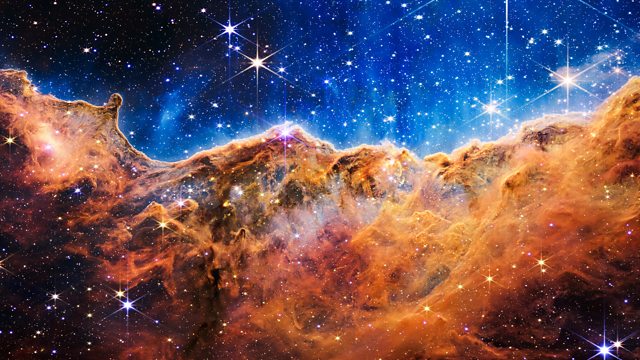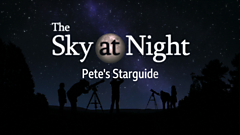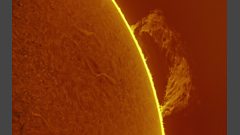
The James Webb Road Trip
The Sky at Night team meets the scientists in the UK researching the astonishing new data returned by the James Webb Space Telescope.
On 12 July 2022, the Sky at Night joined the rest of the world to watch as the James Webb Space Telescope released its long-awaited first images. And it didn’t disappoint. Stars and galaxies were revealed in such detail that they blew even the most experienced astronomers away. However, as spectacular as these images were, it was the data that they represented that really excited the scientists watching.
Chris Lintott travels around the country, meeting some of the scientists getting their hands on the very first batches of data coming from the JWST. His first stop is Professor Andy Bunker at the University of Oxford, who is pushing the world’s newest space telescope to its limits to look for some of the first stars and galaxies formed after the Big Bang.
Chris also meets Dr Mikako Matsuura of Cardiff University. She is studying the gas structures that dying stars exude as they reach the end of their lives. Mikako explains how the incredible infrared capabilities of the JWST allow her to probe the discs of dust and gas around nebulae and reveal the surprising conditions that form them.
Chris then heads on to the University of Bristol to visit Dr Hannah Wakeford, who is incredibly excited by her data, which is revealing previously unknown secrets from the atmospheres of exoplanets orbiting far-flung stars. Hannah’s method of studying exoplanets uses the JWST to measure the light from a target star as an exoplanet ‘transits’ in front of it, briefly and almost imperceptibly dimming it. It is these incredibly precise measurements, only made possible by the sensitivity of this new supertelescope, that she hopes will change what we know about the atmospheric composition of these distant worlds.
Finally, Chris visits Professor Leigh Fletcher at the University of Leicester. Leigh is using the space telescope to look a little closer to home and shows Chris the latest images of Jupiter revealed in a whole new light by the JWST’s infrared data. He explains to Chris the difficulties of capturing large bright objects in the telescope’s small field of view, and what his plans are for studying our solar system’s gas giants.
Meanwhile, Maggie Aderin-Pocock gives a JWST masterclass in the studio. Why is this telescope so revolutionary, and how exactly does it work? She looks at why the JWST is observing light from the infrared part of the electromagnetic spectrum, and also why scientists chose to place the telescope in a location so far from Earth that we could not fix it if something went wrong. Maggie also explores the instruments that call the telescope home and takes a closer look at some of the tricks they have up their sleeves.
Last on
More episodes
Previous
Clip
-
![]()
Starguide: August 2022
Duration: 03:54
Music Played
Timings (where shown) are from the start of the programme in hours and minutes
-
![]() 00:00
00:00Royal Philharmonic Orchestra, Thomas Beecham
At The Castle Gate From Pelleas and Melisande (The Sky At Night) (1955)
Credits
| Role | Contributor |
|---|---|
| Presenter | Chris Lintott |
| Presenter | Maggie Aderin-Pocock |
| Production Coordinator | Carisse Perks |
| Production Manager | Charlie Bennett |
| Researcher | Chris Johnston |
| Executive Producer | Steve Crabtree |
| Producer | Amena Hasan |
| Producer | Marina Hui |
| Director | Marina Hui |




